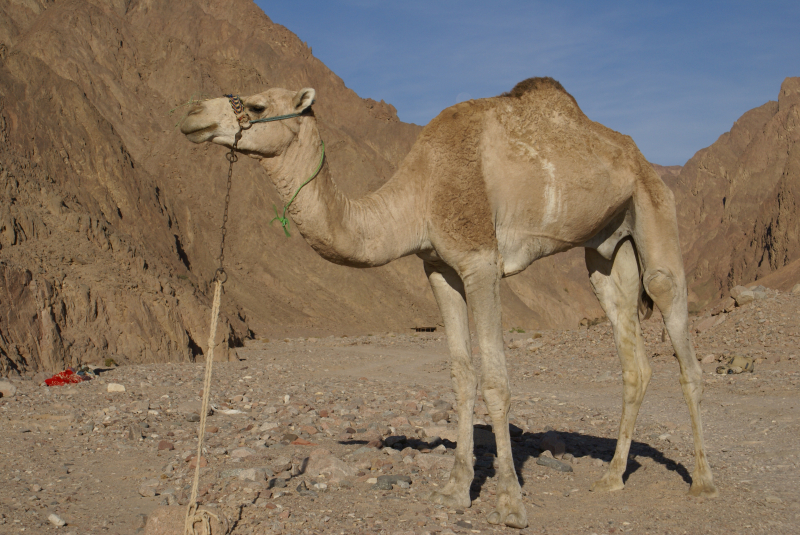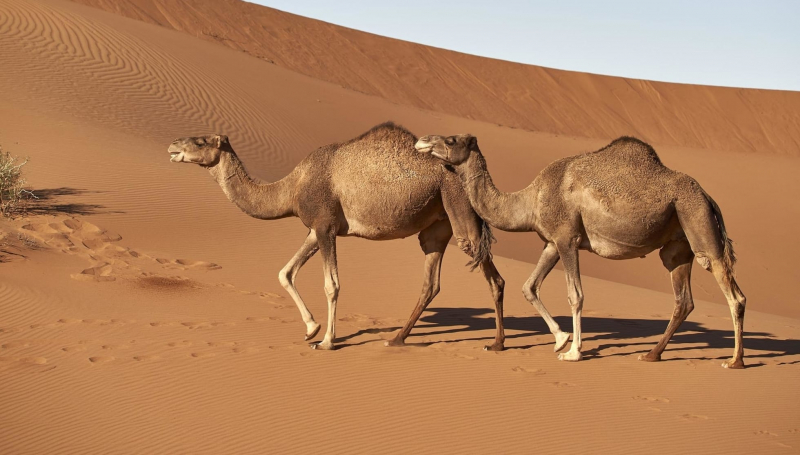Dromedary Camel
The Dromedary Camel is a large even-toed ungulate, of the genus Camelus, with one hump on its back. It is the tallest of the three species of the camel; adult males stand 1.8–2.4 m at the shoulder, while females are 1.7–1.9 m tall. Males typically weigh between 400 and 690 kg (880 and 1,520 lb), and females weigh between 300 and 540 kg (660 and 1,190 lb). The long, curving neck, small chest, single hump (as opposed to the two found on the Bactrian camel and wild Bactrian camel), and long hairs on the throat, shoulders, and hump are the species' distinguishing characteristics. Typically, the coat has a brown color. The hump is formed of fat that is held together by fibrous tissue and is at least 20 cm tall.
In the wild, the dromedary hasn't been seen in a natural setting in about two thousand years. It was likely domesticated for the first time on the Arabian Peninsula around 4,000 years ago or in Somalia, where murals in Laas Geel depict it from more than 5,000 to 9,000 years ago. The dromedary lived in the Sahara Desert and other arid areas in the wild. In the Old World, the domesticated dromedary is typically found in semi-arid to dry areas, primarily in Africa and the Arabian Peninsula, however, there is also a sizable feral population in Australia. Products of the dromedary, including its meat and milk, support several North African tribes; it is also commonly used for riding and as a beast of burden.












